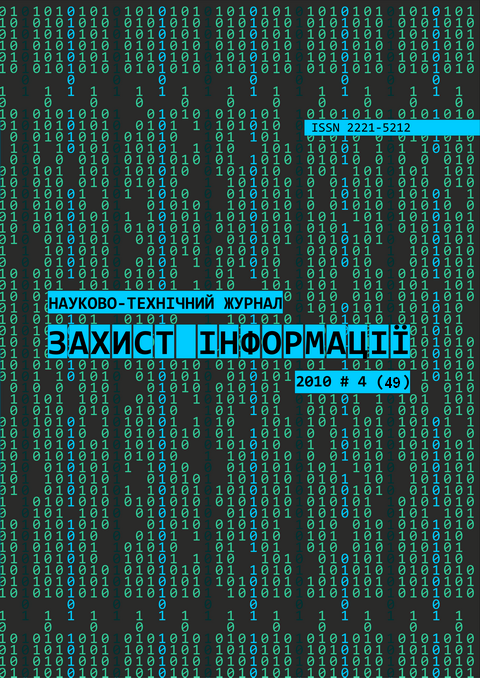ИСПОЛЬЗОВАНИЕ МЕТОДОВ АДАПТИВНОГО КВАНТОВАНИЯ В ЗАДАЧЕ ВНЕДРЕНИЯ ЦВЗ
DOI:
https://doi.org/10.18372/2410-7840.12.1981Abstract
Внедрение цифрового водяного знака (ЦВЗ) — технология, созданная для защиты авторских прав на компьютерные файлы. ЦВЗ делятся на два класса. К первому классу относятся знаки, видимые невооруженным глазом. Ко второму - извлекаемые с помощью специальных средств. В отличие от метаданных цифровых форматов, которые могут нести в себе дополнительную информацию, ЦВЗ отличаются тем, что информация «зашита» прямо в сигнал. Объекты мультимедиа в этом случае будут представлять собой контейнеры (носители) данных. Подмена объекта идентификации, приведет к выводу о подделке всего документа. Цифровые водяные знаки получили своё название от старого понятия водяных знаков на ценных бумагах (деньгах, документах и пр.).References
Гонсалес Р., Вудс Р. Цифровая обработка изображений .- М.: Техносфера, 2005.
Farah I.R., Ismail I.B., Ahmed M.B. A Watermarking System Using the Wavelet Technique for Satellite Images. Processings of world academy of science/ engineering and technology. Vol. 17, 2006.
Грибунин В. Г., Оков И. Н., Туринцев И. В. Цифровая стеганография. — М.: «Солон-Пресс», 2002.
Jeng-Shyang Pan, Hsiang-Cheh Huang, Lakhmi C. Jain. Intelligent Watermarking Techniques. World Scientific Publishing Co. Pte. Ltd.
Downloads
Issue
Section
Articles
License
Authors who publish with this journal agree to the following terms:- Authors retain copyright and grant the journal right of first publication with the work simultaneously licensed under a Creative Commons Attribution License that allows others to share the work with an acknowledgement of the work's authorship and initial publication in this journal.
- Authors are able to enter into separate, additional contractual arrangements for the non-exclusive distribution of the journal's published version of the work (e.g., post it to an institutional repository or publish it in a book), with an acknowledgement of its initial publication in this journal.
- Authors are permitted and encouraged to post their work online (e.g., in institutional repositories or on their website) prior to and during the submission process, as it can lead to productive exchanges, as well as earlier and greater citation of published work (See The Effect of Open Access).

